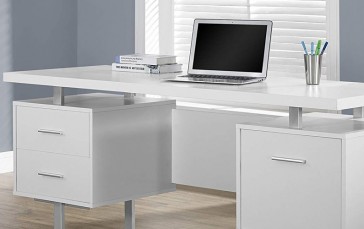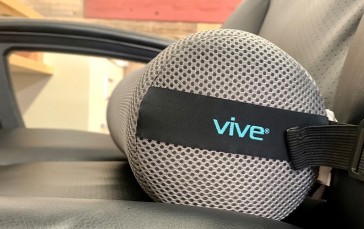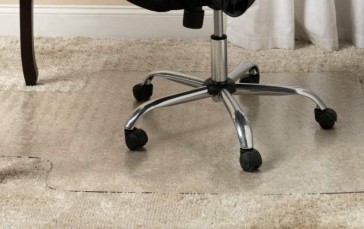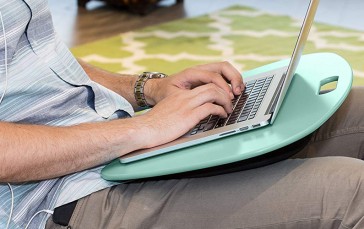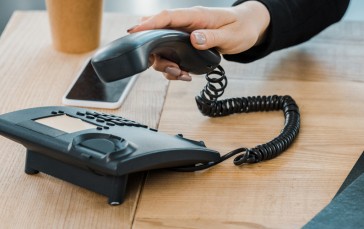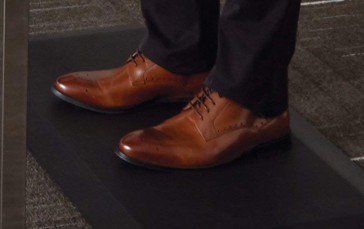Office ergonomics is a relatively young but burgeoning industry. In recent years, the standing desk wave has shown itself to be gale-force — and certainly ample enough to shore up a vast array of styles, variations, and add-ons. Fluidstance caught the wave early on. In 2015, the Cali-based balance board maker debuted its “category-creating” omnidirectional standing desk balance board.
Since then, FluidStance has siphoned its 13+ patents and numerous clinical trials into its small but formidable collection of standing-desk apropos boards. You can expect each model to command about as much cha-ching as its office-chair equivalent. But word around this water cooler is that they’re worth the scratch.
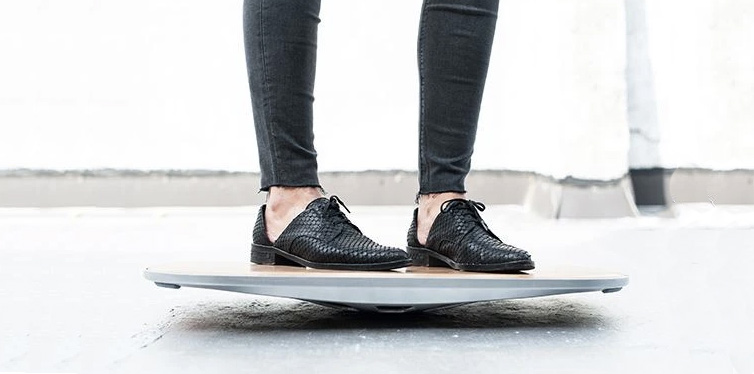
Desk Balance Board Options
FluidStance offers its cubicle-savvy wobble boards in three premium-made models, the styles and compositions of which follow respective price points.
Just ahead of Father’s Day, the company was offering its bestselling model, The Level, at $50 under MSRP and throwing in a $49 “Challenge Cap” free of charge — you know, to celebrate the desk-jobbin’ dads out there.
The Challenge Cap clips to The Level’s base and acts as a height/balance modifier. One longtime The Level owner said about the Cap, “[T]rust and believe that this thing is not to be trifled with! It makes balancing much harder, and you can really feel it in your core and legs. Takes balancing to a whole new level!”
- The Original ($397 MSRP): military-grade aluminum die-cast lattice base, premium bamboo deck
- The Level (
$269 MSRP, $219 + $49 Challenge Cap): military-grade aluminum die-cast lattice base, premium maple deck - The Plane Cloud ($189 MSRP): 100% post-industrial HDPE base, naturally non-microbial recyclable foam deck
It’s Science!
FluidStance boards were the only workplace balance boards rigorously tested and endorsed by the Mayo Clinic. Clinicians looked to several key areas when comparing effects of working while sitting, working while using a FluidStance deck, and working while standing without one:
- Energy Expenditure: use of a FluidStance board expended ~19% more energy compared to sitting
- Heart Rate: FluidStance users saw an average heart rate increase of 15% when using the board versus when sitting
- Range of Motion: users experienced an increased omnidirectional range of 24% on average
- Dorsiflexion and Plantarflexion: use of a FluidStance board more closely mimicked natural toe and heel movement than sitting or standing
- Focus and Productivity: no drop in user’s abilities to manage and execute work-related tasks was observed
And if that’s not enough to get you on board (lol), check out FluidStance’s “The Science Behind It” page. There you’ll find a wealth of links to official research findings, whitepapers, and even a bit about where this well-balanced young company comes from and where it plans on going.
Learn more at FluidStance.com.


